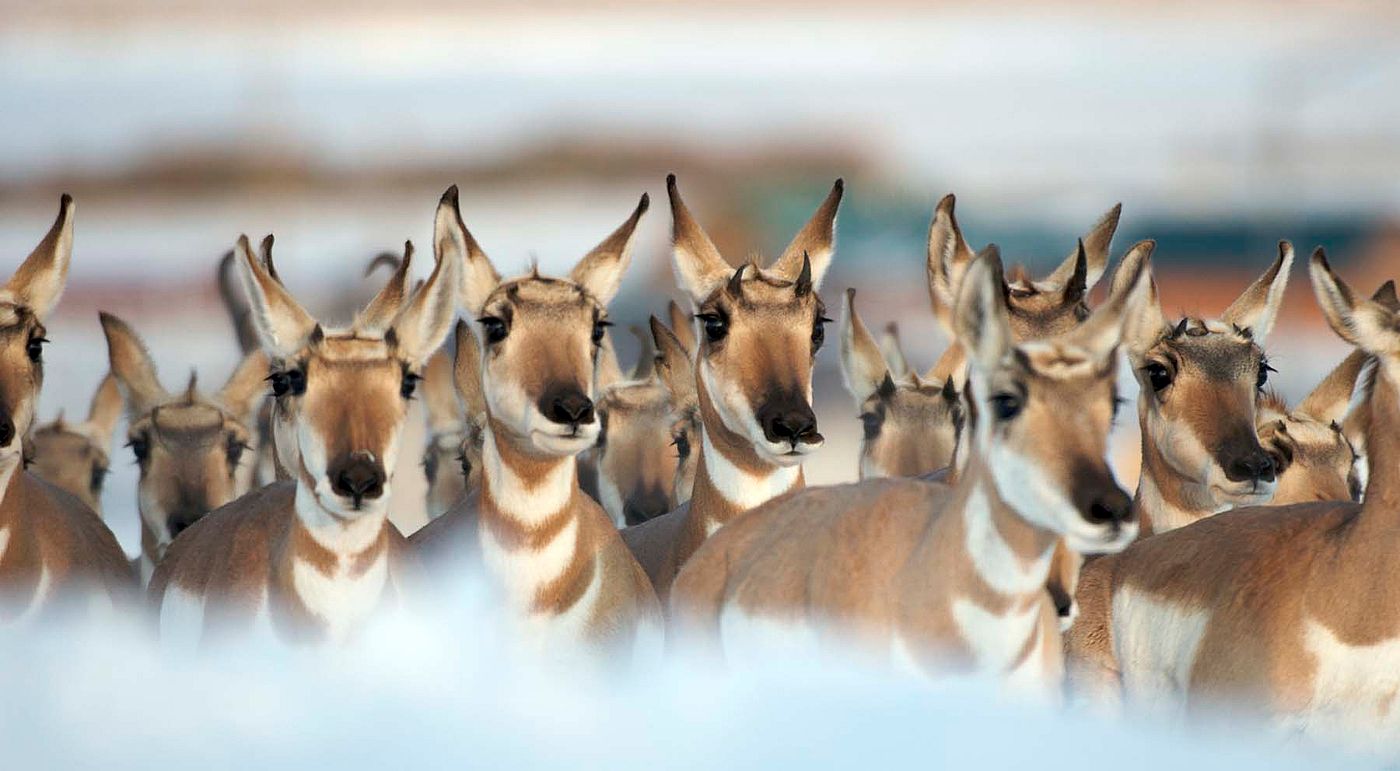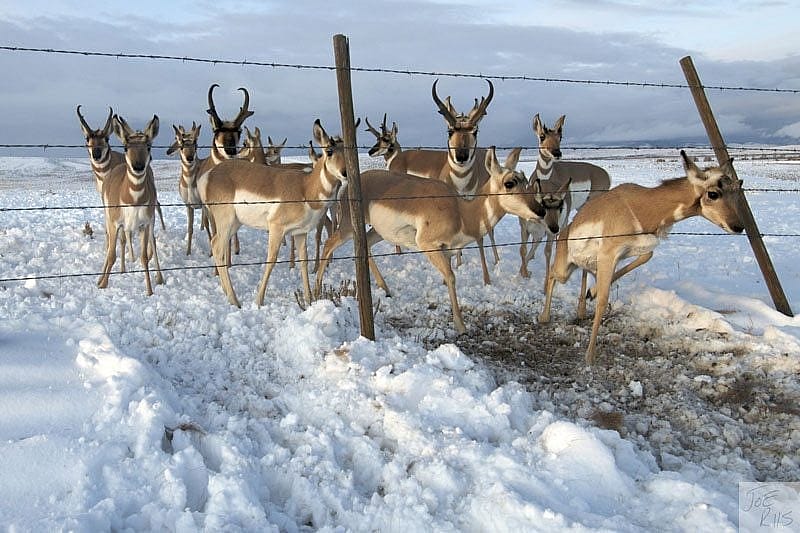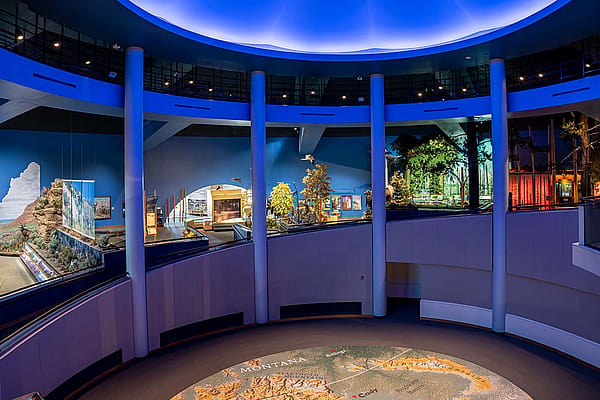
‘Pronghorn Passage’ tells of the pronghorn migration and conservation measures
Every year, about three hundred pronghorn antelope travel from summer range in Grand Teton National Park to winter range in Wyoming’s Green River Basin. This journey is the longest overland mammal migration in the continental United States. Pronghorn Passage, a special exhibition opening December 1, 2013, at the Buffalo Bill Center of the West in Cody, Wyoming, tells the story of the migration, its perils for the animals, and recent steps taken to protect it in ways compatible with encroaching development. [The exhibition closed in August 2014.]
The core of the exhibition is the large-format photography of Joe Riis, a National Geographic Young Explorer who has documented—on foot—the pronghorn’s approximately 150-mile annual migration. Riis, a biologist and wildlife photographer, was recently awarded, along with Dr. Arthur Middleton, the inaugural Camp Monaco Prize to fund a project studying elk migration.
Using remote cameras to capture many of the images, Riis set out to spread awareness of the importance of the migration as well as the obstacles the pronghorn face during their journey. Dr. Charles Preston, senior curator at the Center of the West and founding curator of its Draper Natural History Museum says, “The photography in Pronghorn Passage is spectacular, but the story of this epic migration is even more exciting and inspiring.”
Collaborating with Riis on the project to help tell that story is Emilene Ostlind, a recent recipient of the Knight-Risser Prize for Environmental Journalism for her reporting on the pronghorn migration. The award-winning article from High Country News, “Perilous Passages,” adds her direct and personal observations to the scientific story of the migration, and is incorporated into the exhibition at the Center of the West.
The awareness raised by Riis and Ostlind’s work, as well as that of others who have called attention to the subject, has given rise to creative methods to protect the migration corridor, threatened in recent years by land subdivision and oil and gas development. The innovative approach includes methods compatible with development, including the construction of highway overpasses, underpasses, and wildlife-friendly fences with a smooth bottom strand under which antelope can more safely crawl.
As Preston notes, “Wildlife is an important part of our western heritage, and as we continue to change our world, we create new challenges for wildlife. Pronghorn Passage,” he adds, “shows that we also have the ability to find solutions to help wildlife overcome some of those challenges.”
Pronghorn Passage has previously appeared in other venues, including the University of Wyoming Berry Center for Conservation Biodiversity in Laramie, the Wildlife Experience in Colorado, and the Banff Center in Alberta, Canada. At the Center of the West, the exhibition has been expanded to include sculpture by T.D. Kelsey, a large wall map showing the migration route, updated and expanded information, and an example of the safety fencing. Video programs covering the project also augment the exhibition. These include features from National Geographic’s “Wild Chronicles” program, High Country News, and the Wildlife Conservation Society.
For more information on this and other special exhibitions at the Center of the West, as well as exhibitions and objects from the Center’s collections that travel to distant venues, visit the Explore section of our Web site and click on Exhibitions and Beyond Our Walls.
Written By
Nancy McClure
Nancy now does Grants & Foundations Relations for the Center of the West's Development Department, but was formerly the Content Producer for the Center's Public Relations Department, where her work included writing and updating website content, publicizing events, copy editing, working with images, and producing the e-newsletter Western Wire. Her current job is seeking and applying for funding from government grants and private foundations. In her spare time, Nancy enjoys photography, reading, flower gardening, and playing the flute.










